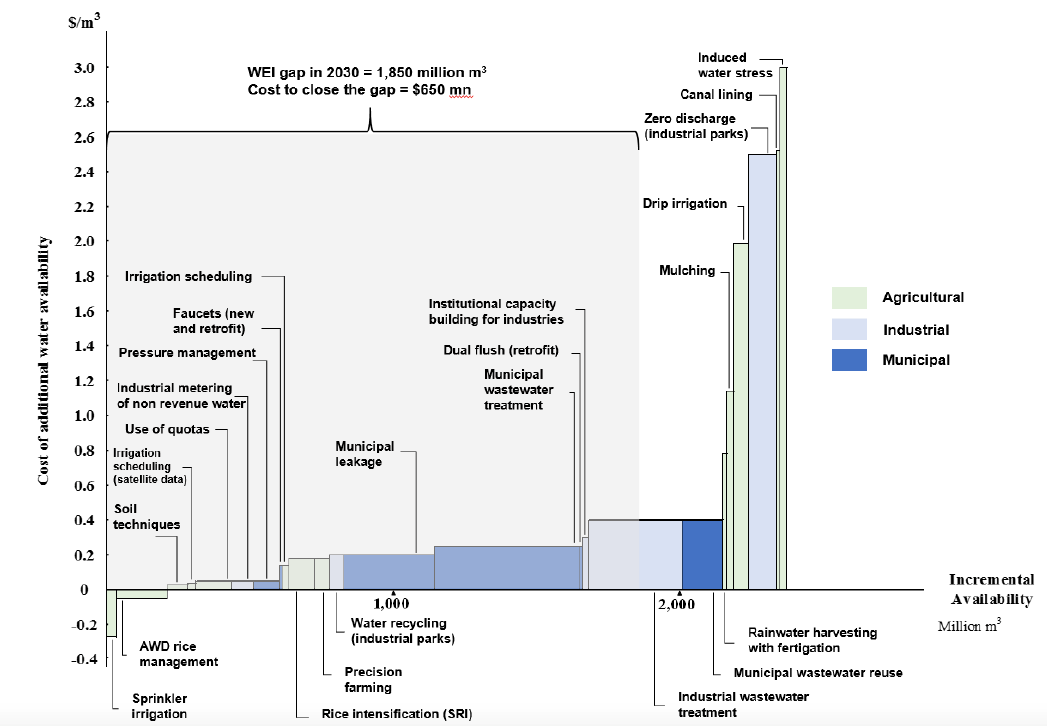Vietnam – a high level analysis
Vietnam is a country that faces diverse water-related challenges whilst experiencing strong economic growth. To respond to these challenges, a partnership facilitated by the 2030 WRG between the Government of Vietnam, the private sector and civil society is currently being explored, to identify and align joint initiatives to work towards sustainable water resources management.
2030 WRG has initiated a high-level analysis of the water sector in Vietnam with ARUP as technical partner, focused on estimating the water demand-supply gap, assessing ongoing initiatives, and identifying potential cost-effective and technically feasible solutions to close the gap. A multi-stakeholder advisory board was established to guide the analysis. On the basis of the analysis and stakeholder inputs, select deep dives were conducted to provide insight into ‘high impact’ areas for a potential future work plan in Vietnam.
- Alternate Wet and Dry (AWD) Rice Management Practice:
Rice is the dominant crop grown in Vietnam and accounts for 58% of the total irrigated area. Water efficiency measures in rice production can have a great impact on reducing agricultural water demand. AWD has the potential to reduce demand by 30% and is endorsed by the Government of Vietnam as a technical innovation. The Government of Vietnam aims to apply AWD in 1 million ha of paddy rice by 2020. AWD also results in yield increases which could present a business case for farmers. - Municipal Wastewater Treatment and Reuse in Ho Chi Minh City (HCMC):
HCMC is the economic hub of Vietnam with an estimated gross domestic product (GDP) of $43.7 bn. HCMC is projected to be ‘water stressed’ by 2030. Currently only 10% of HCMC’s municipal wastewater being treated. The government plans to increase the treatment capacity to 100% by 2030. It is estimated that HCMC’s estimated non-potable water demand can be met with wastewater treated to appropriate standards. - Industrial Wastewater Treatment and Reuse around Hanoi (Nhue-Day Basin):
Despite legislative requirements, most facilities do not have wastewater treatment plants. As per the Analysis, it is suggested to explore opportunities to improve the legal framework and create incentives for sustainable water resources management. Opportunities can also be explored with infrastructure development companies around financing arrangements and commercialization of Centralized Effluent Treatment Plants (CETPs) and industrial water reuse systems. - Water Efficiency for Coffee Production in the Central Highlands:
Excessive groundwater abstraction for coffee production causes groundwater depletion and water shortages. Applying precision irrigation, could result in significant reduction in water demand, while potentially increasing yields and reducing input costs.
The deep dives provide an improved understanding of the impact, cost and barriers of implementation of analyzed measures. They also provide an indicative roadmap on implementation and relevant stakeholders.
The analysis for a sample basin is shown in the box below:
Dong Nai River Basin has about 4% if the nation’s water and produces 28% of GDD. It is home to Ho Chi Minh City and well developed industrial complexes.
Dong Nai River Basin will be “water stressed” by dry season in 2030 and a total water demand reduction of 1.8 billion m3/year will be required to move to a “low water stress” state. A set of water reduction measures are assessed in a cost curve below aiming to close the water demand and supply gap and to move the basin to less water stressed state by 2030. Besides the cost-effective agriculture measures, municipal and industrial water treatment and reuse intervention should be part of the solution basket (linked to the deep dive of the Municipal Wastewater Treatment and Reuse in Ho Chi Minh City). Total cost for basin wide approach could mount up to 650 million dollars.
Caption: SERC River Basin – cost curve of solutions to close the dry season water gap and reduce water stress to ‘low water stress’ in 2030

